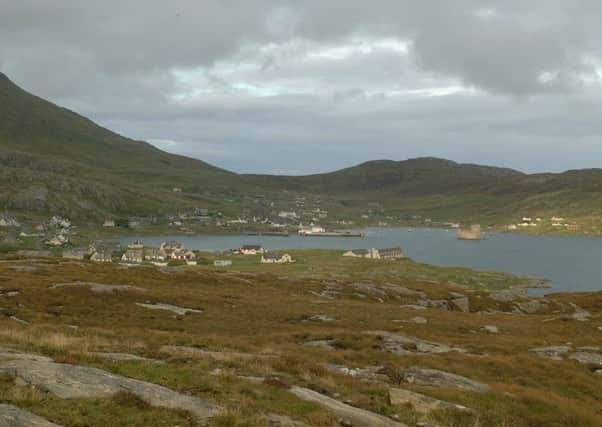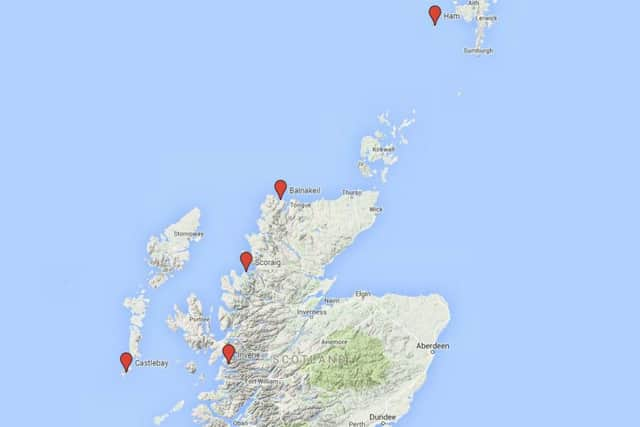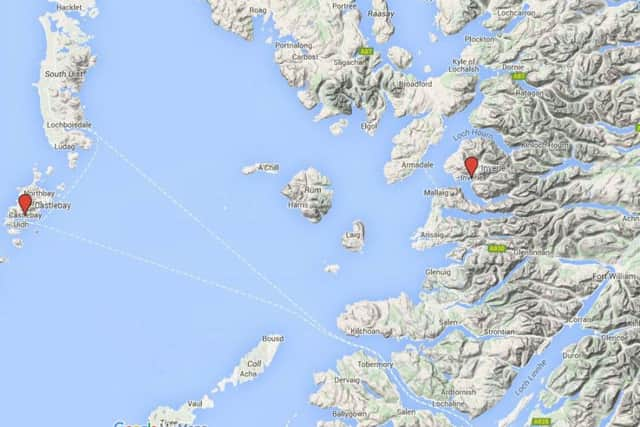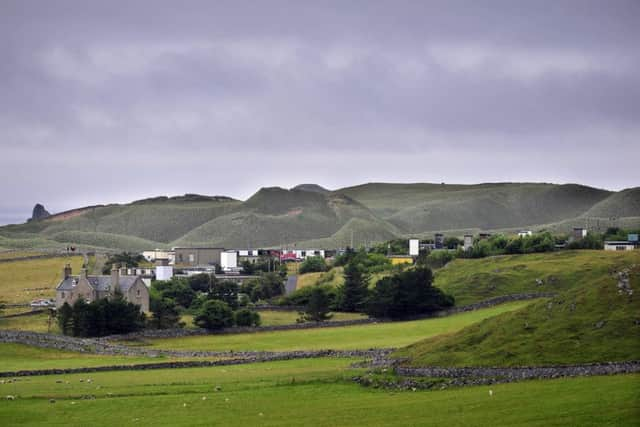Where can you find Scotland's remote villages?


The bulk of Scotland’s 5.3 million residents are spread across the Central Belt leaving much of our nation relatively unpopulated.
We take a look at five remote outposts of civilizations scattered across the country’s outer edges. (To view a higher resolution map image click here)
SCORAIG
Advertisement
Hide Ad

This secluded village only has 70 residents and can only be reached by boat from Badluarach Jetty or a winding coastal path, that is a five mile walk from the end of the nearest road. The five school children in the area were without a teacher at the end of 2015, with a job advertisement seeking for someone with “emotional stability”.
Post is only delivered three times a week, and most of the residents live off their own land - harvesting vegetables from their plots or gardens and raising their own pigs and chickens.
There is around 40 homes in the village, most of which were built by their owners. (To view above map click here)
INVERIE


This tiny settlement, situated on the peninsula of Knoydart on the north side of Loch Nevis, the village is only reachable by either a seven mile ferry from Mallaig, or a 17 mile hike. The village has approximately 115 permanent residents, but a thriving tourist trade in the summer - it is also home to Britain’s most remote mainland pub, The Old Forge
CASTLEBAY
On the Outer Hebrides, Castlebay is located on the Isle of Barra, which is only four miles wide by eight miles long. While it is one of the more populated remote places the island is only reachable by ferry or by plane. The 2011 census recorded 1,174 permanent residents. The 20 seater plane can only fly twice a day - during high tide the runway disappears beneath a wall of water.


HAMETOWN AND HAM
With only 38 permanent residents, these two villages are the most remote, continually inhabited in the British isles. Part of the Shetland islands, the villages are located on the island of Foula, which is only 4.9 square miles in size.
Advertisement
Hide AdFerries sail from Ham to Walls and Scalloway on the Shetland Mainland, and flights depart from Foula’s airstrip to Tingwall Airport.


There is little shelter for boats on the island. The only beach is at the head of Ham Voe on the east coast. Local boats, including the mail boat, are hauled out of the water.
Advertisement
Hide AdFoula means bird island in Old Norse, and is unsurprisingly rich in fauna and flora and is designated as a Special Protection area for birds and a Site of Special Scientific Interest for plants and geology.
BALNAKEIL
Situated in the parish of Durness, it is in the north of Sutherland. The village was featured in the 1974 BBC documentary The Road to Balnakeil, and is currently home to chocolate manufacturers Cocoa Mountain.
In 2001 the population of Durness was around 350 residents, with Balnakeil taking a small portion of this. There are currently only 19 pupils at the primary school, made up of two classes: primary 1-4 and 5-7.